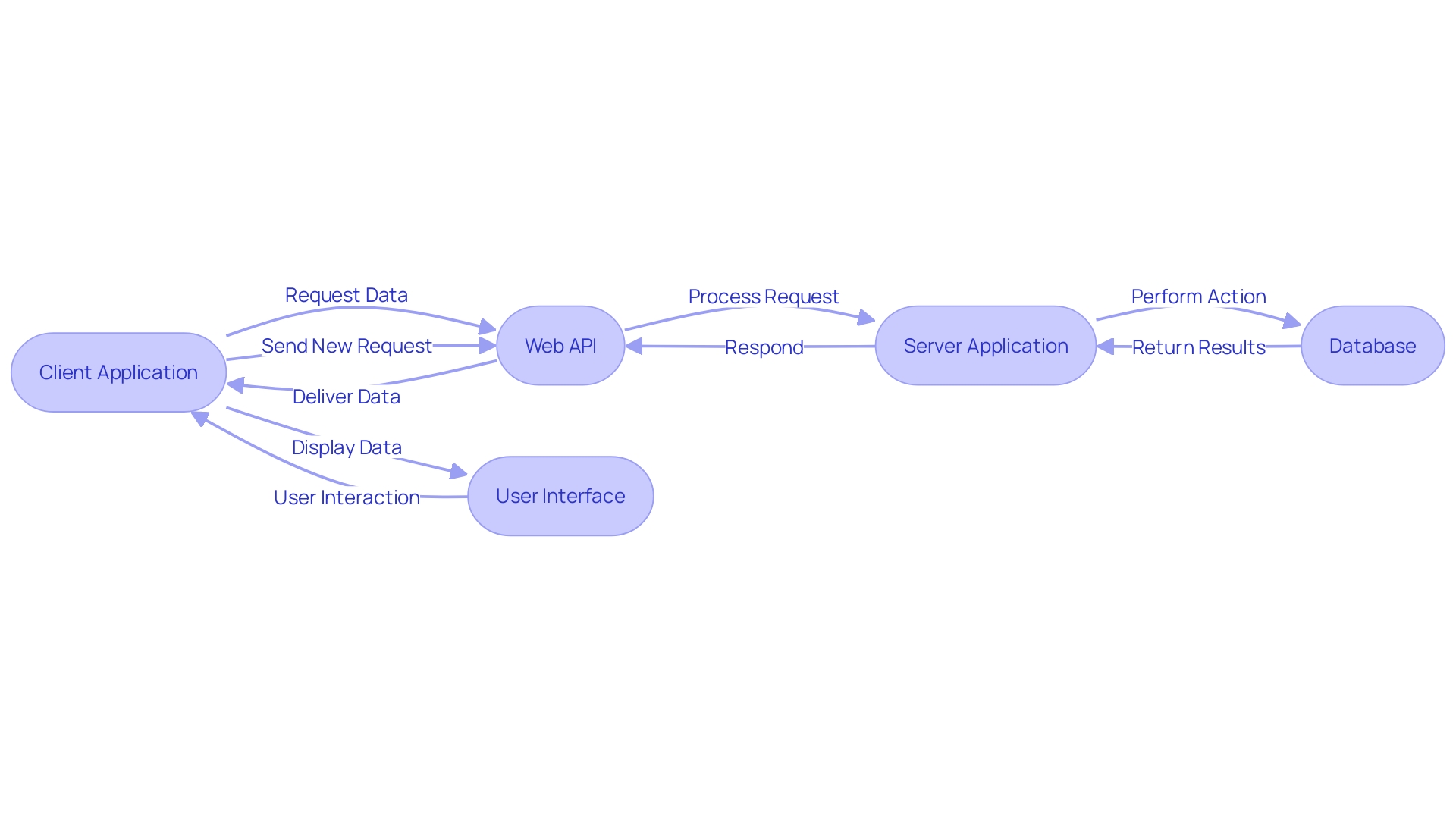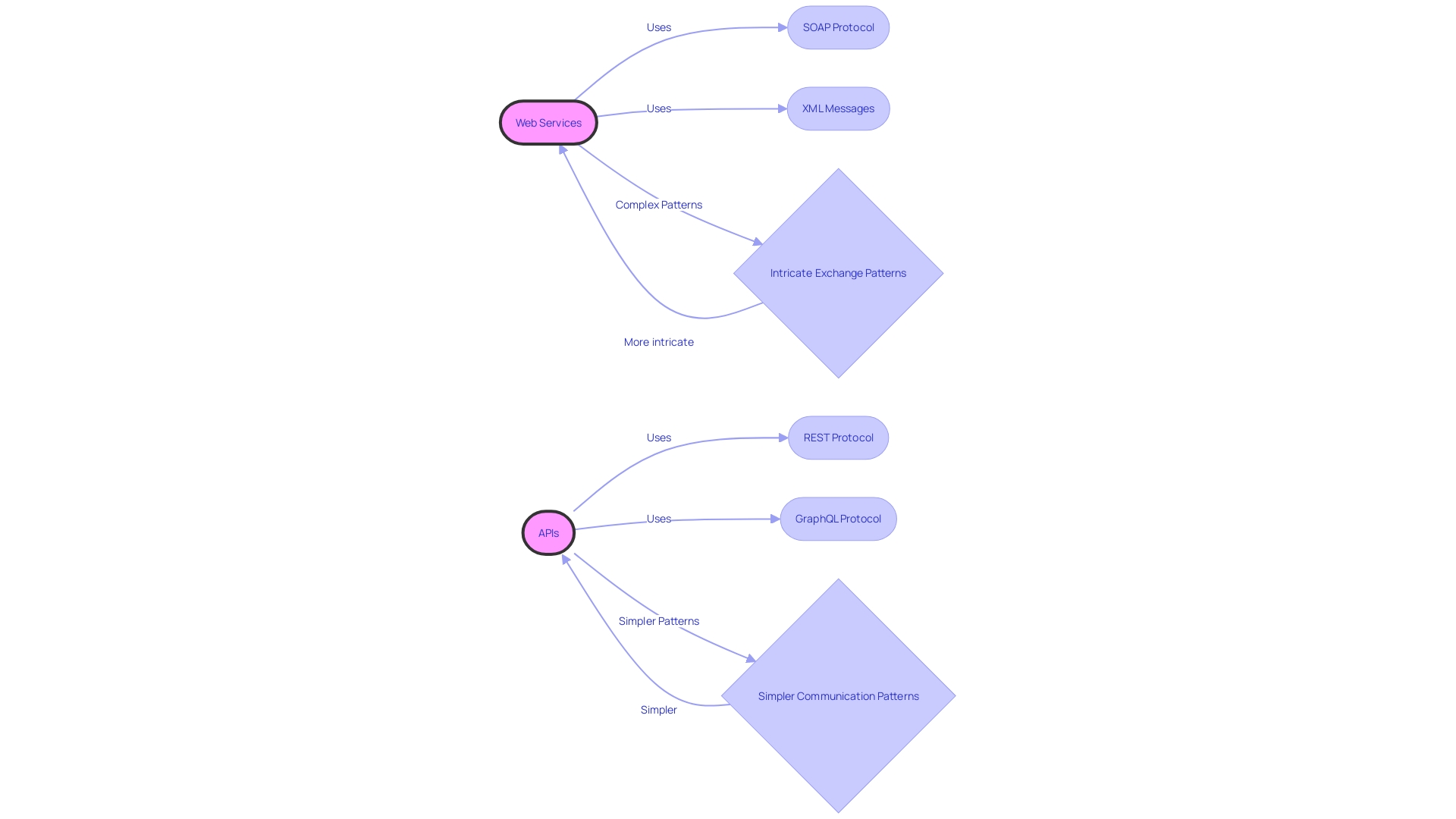Introduction
Web services and APIs play a pivotal role in today's digital landscape, facilitating seamless communication and integration between software components. This article explores the fundamental concepts behind web services, APIs, and their key differences. It delves into the significance of APIs in driving enterprise innovation and addresses the ongoing SOAP vs REST debate.
Whether you're a software developer or an industry enthusiast, this insightful guide will equip you with the knowledge to navigate the evolving world of APIs and harness their potential for efficient and effective software development.
What are Web Services?
Web services, a cornerstone of modern digital ecosystems, are governed by Application Programming Interfaces (APIs) which facilitate the interactive message exchange across the internet using web protocols and standards. Originating from the development of Information and Communications Technologies (ICT), APIs are crucial for enabling software components to interconnect seamlessly. Web APIs, which emerged with Salesforce's introduction in 2000, have revolutionized the way modular software components, possibly owned by various entities, communicate over the web.
Functionally, web APIs consist of endpoints—essentially two pieces of software communicating over the network. They represent the critical infrastructure for a plethora of cloud, mobile, and machine learning applications, now considered the backbone of these technologies due to their capability to process and analyze data in real time. With the passage of years, Tim Berners-Lee envisioned a future where data could transition smoothly between platforms, an ideal that web APIs bring to life by enabling interoperability and efficient data transfer across diverse systems.
In these digital platforms, the value of web APIs extends beyond their role in connectivity; they also anchor economic benefits by allowing companies to co-create services and potentially monetize API usage. The profound impact of APIs is reflected in today's digitally connected realm, where they power countless services and applications. By serving as intermediaries, APIs allow distinct software to access functionalities or data from other systems, ushering in an era where technical synergy is not just an ideal but a reality, significantly fostering the spirit of the internet and the continuous evolution of the digital landscape.

What are APIs?
Understanding the inner workings of APIs, or Application Programming Interfaces, can transform the way software applications leverage external functionalities and data. At their core, APIs are the mutual dialect allowing distinct software entities to request and share information efficiently and securely. Whether for a bustling e-commerce platform or the intricate web of logistics operations, APIs ensure that the various microservices, each handling a unique process like warehousing or order fulfillment, work in tandem flawlessly.
APIs span across various protocols such as RESTful services, SOAP, or the increasingly popular GraphQL, each offering distinct benefits and catering to specific use case requirements. Their implementation goes beyond basic communication, playing a vital role in system integration, especially in large-scale projects where robustness and reliability are paramount. Considering a Vehicle Identification Number (VIN) system as an analogy, each API provides unique identification, like sequences in a VIN, ensuring precise and secure information exchange.
On the international stage, discussions at events like the World Economic Forum in Davos highlight the transformative potential of API development in industries like blockchain and artificial intelligence. Thought leaders, such as Dominic Williams, frequently point out the increasing importance of API-centered solutions in driving enterprise innovation and response to customer needs. With the rising emphasis on API development's expertise, these interfaces are recognized as not just technological frameworks but as keystones in the evolution of software efficiency and scalability.
Key Differences Between Web Services and APIs
Web services and APIs are the linchpins of software communication, yet they differ fundamentally in design and function. While web services lean on the SOAP or REST protocols to carry out more intricate exchange patterns—think request-response or publish-subscribe—APIs embrace a wider array of protocols like REST, SOAP, and GraphQL to grant access to specific functionalities or resources. Simplicity marks APIs’ communication patterns, a stark contrast to the often-complex interactions within web services.
Akin to an ATM’s interface enabling customers to access bank services, APIs serve as the bridge for software-to-software interactions, allowing seamless integration of established application functions instead of reinventing the wheel. These interfaces are vital for modern-day software integration, which connects different applications to operate as one, enriched system, enhancing user experience and developer productivity. APIs’ role as a critical intermediary shines in various operations, such as the Request-Response Cycle, ensuring applications converse effectively and data is shared judiciously.
Digital innovation ecosystems often view technology as a modular architecture, placing web APIs at the forefront of digital transformation. As a subset of APIs utilizing internet protocols for interactive message exchanges, web APIs underscore the economic value and structure essential for such ecosystems.
Noteworthy predictions from Tim Berners-Lee, the web's inventor, include a future where seamless data portability across platforms is the norm, mirroring the spirit of the internet. This view aligns with API's promise of ushering in an era of unrestricted, efficient communication between diverse software entities. For instance, consider Webhooks—they inform a client instantly of an event, diverging from the traditional polling's regular checks and symbolizing APIs' evolution towards real-time update facilitation.
Concluding, the distinct functionalities of web services and APIs blend into the broader fabric of web development, crafting interactive applications that cater to a dynamic digital environment.

SOAP vs REST: A Comparative Analysis
SOAP and REST represent core building blocks in crafting web services and APIs, each with its own distinct paradigm. SOAP — the heavyweight contender — leans on XML for its messaging format, requiring a specialized messaging framework to function efficiently. REST, the more flexible and lightweight option, utilizes the ubiquitous HTTP methods (GET, POST, PUT, DELETE) and is known for its media type agnosticism, embracing data formats like JSON and XML with open arms.
Although SOAP may radiate complexity, it's this intricate nature that aligns it with business-critical operations demanding high levels of security and standardized transactions. When it comes to REST, its simplicity and adaptability are celebrated, allowing it to seamlessly scale with the needs of modern web applications.
The strategic choice between SOAP and REST gravitates around the application's unique demands and its communication architecture, ensuring a tailored approach to API development. As seen with TotalEnergies' Digital Factory, APIs are instrumental in propelling a company's digital transformation forward. Their wide-spread endorsement by developers, evidenced by unanimous approval of tools like Postman for fostering seamless collaboration, further underlines the criticality of selecting the right protocol in the digital ecosystem.
Grasping the underlying principles of REST, which revolves around key attributes like statelessness — allowing the API to serve myriad clients without a hitch — is paramount in comprehending how it ensures scalability. This scalability is essential for systems to flourish amid the surging digital interactions of today and tomorrow. Corporations like SmartBear reinforce this belief, exemplifying an influence that delineates successful practices from the chains of outdated conventions.
Indeed, the evolution and practical application of APIs cannot be overstated. In a technologically entwined world, they are the veins essential for the lifeblood of connectivity to circulate, unifying software systems with finesse and agility. With this guide, we venture into the nuanced artistry of API craftsmanship, equipping you with the necessary prowess to sculpt APIs that are not only effective but resilient, anchoring the continuous development of dynamic software landscapes.
Conclusion
In conclusion, web services and APIs are vital for seamless communication and integration between software components. APIs serve as the backbone of web services, enabling efficient data transfer and co-creation of services for economic benefits.
The differences between web services and APIs lie in their design and function. Web services rely on protocols like SOAP or REST for complex exchange patterns, while APIs offer simplicity and act as intermediaries for enhanced user experience and developer productivity.
The SOAP vs REST debate emphasizes the contrasting nature of these paradigms. SOAP suits business-critical operations with its XML-based messaging format, while REST excels in simplicity and adaptability with HTTP methods and accommodating data formats.
APIs are essential for digital transformation and garner support from developers for seamless collaboration. Understanding REST's principles, like statelessness and scalability, is vital for building robust systems in a dynamic digital landscape.
APIs serve as the veins of connectivity in the technologically entwined world, bringing software systems together with finesse. Mastering API craftsmanship allows you to create effective and resilient APIs that contribute to the continuous development of dynamic software landscapes.
Harness the power of APIs and unlock their potential for efficient and effective software development.
Master the principles of REST and build robust systems that thrive in a dynamic digital landscape.
Frequently Asked Questions
What are web services?
Web services are systems designed to support interactive operation over the internet using web protocols and standards. They enable different software components, potentially owned by various entities, to communicate and exchange messages across the web.
What are Application Programming Interfaces (APIs)?
APIs are sets of rules and protocols that allow different software applications to communicate with each other. They enable software to request and share information efficiently and securely, regardless of the underlying technology or platform.
When did web APIs first emerge and who introduced them?
Web APIs first emerged with Salesforce's introduction in 2000, revolutionizing the way software components communicate over the internet.
What is the role of web APIs in modern technology?
Web APIs serve as the critical infrastructure for cloud, mobile, and machine learning applications. They facilitate real-time data processing and analysis and are considered the backbone of these technologies.
How do web APIs benefit digital platforms?
Web APIs allow companies to co-create services and potentially monetize API usage. They serve as intermediaries that allow different software to access functionalities or data from other systems, thus fostering interoperability and efficient data transfer across diverse systems.
What are the key differences between web services and APIs?
Web services mainly use SOAP or REST protocols for complex exchange patterns, while APIs can use a broader range of protocols like REST, SOAP, and GraphQL. APIs are typically simpler in communication patterns compared to the more intricate interactions within web services.
What are SOAP and REST?
SOAP and REST are two different approaches to building web services and APIs. SOAP is a protocol that uses XML messaging and is suited for operations demanding high security and standardization. REST is more flexible, using HTTP methods and supporting various data formats, making it ideal for modern web applications.
Why is the choice between SOAP and REST important?
The choice between SOAP and REST depends on the specific needs and communication architecture of the application. It is crucial to select the right protocol to ensure that the API is effective for the intended purpose.
What is the significance of API development in digital transformation?
API development is critical in linking different software systems and enhancing their capabilities. It plays a vital role in system integration, improving user experience, and increasing developer productivity, thus driving enterprise innovation and digital transformation.
How do APIs contribute to the future of the internet?
APIs are considered to be at the forefront of the digital transformation, aligning with the vision of seamless data portability across platforms. They enable unrestricted and efficient communication between diverse software entities, mirroring the spirit of the internet and contributing to its continuous evolution.




